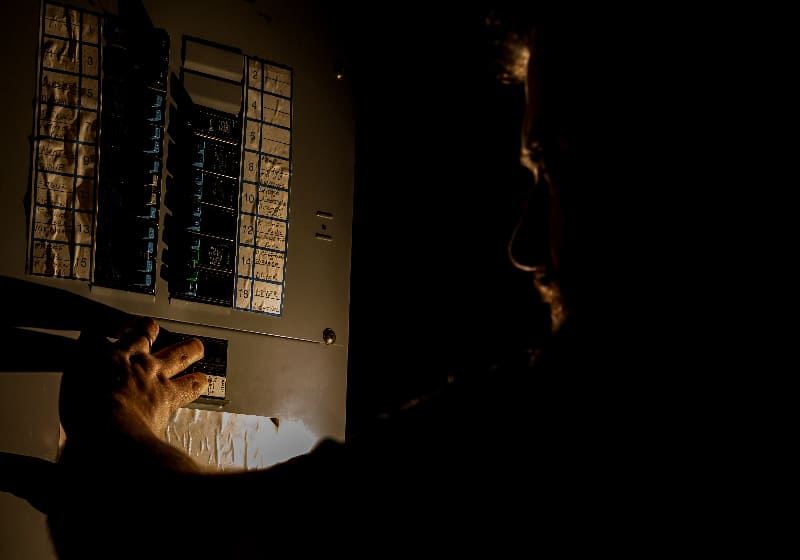An unexpected loss of power to your home is not only a nuisance, but also a serious problem. Whether it’s from strong winds knocking down power lines or a sudden electrical surge, extended outages are a hazard. It’s important that you know what to do in a situation like this to keep your home and your family safe.
Gather in a safe meeting place inside.
The first step you should take when the lights go out in your home is to locate everyone. A severe storm may have forced you all close together, but if you aren’t, safely guide all friends, family and even pets to a single location inside. Once everyone is accounted for, you shouldn’t leave the space alone. Maneuvering in the dark can lead to someone falling or running into furniture and getting injured.
Unplug all of your electronics.
There’s a good chance that you had multiple devices in use before your power went out. You might have been watching the news for weather updates, cooking a meal or possibly using a power tool. Go around your home and turn off or unplug anything that was in use beforehand. The power could come back on at any time, and an unexpected surge can damage sensitive electronics.
Safely find your way in the dark.
As you go through your home checking that everyone and everything is safe, you’ll need a lightsource. Most smartphones today have a built-in flashlight, but constantly using it can drain your phone’s battery. Candles are a popular option, yet they can be dangerous if used incorrectly. An unattended or dropped candle is a fire hazard, and melting wax can cause burns on your skin. The best thing you can do is to find a strong flashlight and backup batteries.
Store your perishable food items.
The majority of power outages are resolved rather quickly, but others can be prolonged for days or even weeks. When this happens, you’ll need to plan for saving the food in your refrigerator and freezer. Leave the doors closed unless you need to grab something. The cold air that’s in your fridge will help keep things cool for up to four hours, and a freezer can last as long as two days. If the outage continues, move the food to a cooler and fill it with ice. You should also keep track of how long food has been stored and how much you have left.
Wait for the power to come back.
With a storm outage, there isn’t much you can do besides wait until things subside. Emergency services will be backed up helping the most urgent calls, and electric companies can’t work until they receive the go-ahead. If you’ve determined that you don’t need immediate help, try to find a way to pass the time. You can play board games and tell stories to lighten the mood.
Prepare yourself for the next outage.
Going through another outage from a storm is unavoidable, but you can be ready next time. Create a plan of action on what to do when you lose power. Inform everyone in your home of what they should do to stay safe, locate a meeting place, assign roles and look at purchasing emergency kits and other safety tools.
The best tools to weather the storm.
Along with formulating a plan, you should also look into getting certain tools to better prepare yourself for a power outage. This includes:
You can also look into getting a residential backup generator to provide power in the case of a lengthy outage.
Have your home’s wiring checked by NPI.
Your home’s wiring is one of its major components, and making sure it’s in the proper condition is vital. To know that you’ll be safe in calm and stormy conditions, contact your local inspector.



